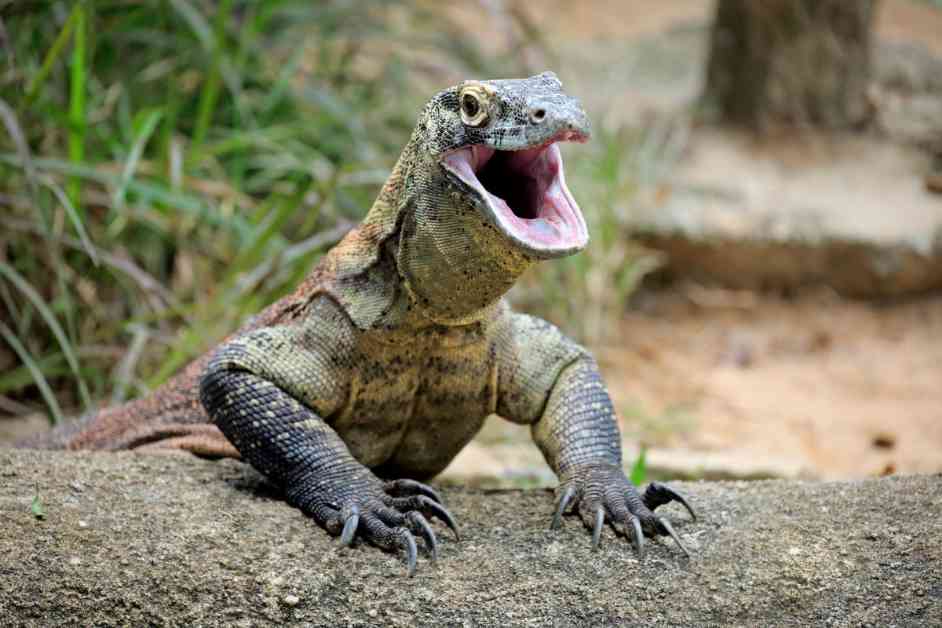Reptile teeth have always been considered simple and easily replaceable due to the fact that they are regularly shed and regrown. However, a recent study on Komodo dragons has challenged this notion. These massive lizards have 60 serrated teeth, each up to an inch long, which are constantly replaced throughout their lives. The teeth are not only used for tearing into prey but also harbor bacteria from previous meals.
Aaron LeBlanc, a paleontologist at King’s College London, made a fascinating discovery when he noticed an orange discoloration on the serrations and tips of Komodo dragon teeth. Upon closer inspection, it was revealed that the orange hue was actually iron present in the teeth even before the dragons took a bite. This finding, published in a research paper in the journal Nature Ecology & Evolution, marks the first confirmed instance of iron-coated teeth in reptiles. While some fish, salamanders, and mammals like beavers are known to possess iron in their teeth, this was a new revelation for reptiles.
Komodo dragons, known for their size and predatory behavior, are like tooth factories, constantly producing new teeth to facilitate their carnivorous diet. The iron reinforcement in their teeth serves a strategic purpose, allowing them to puncture, pull, and swallow large chunks of meat efficiently. The orange markings on the teeth indicate a single line of serrations, with the back serrations being more pronounced, guiding the tooth’s function.
Inspired by this discovery, LeBlanc and his team investigated other living reptiles and dinosaurs for similar iron reinforcements in their teeth. They found that some species of monitor lizards and crocodilians also exhibited this adaptation, albeit to a lesser extent. While dinosaur teeth showed signs of iron, it was likely deposited during the fossilization process due to the abundance of iron on Earth’s surface.
This study highlights the complexity of reptile teeth and the importance of exploring dental adaptations in both living and extinct species. By comparing modern reptiles like Komodo dragons to ancient creatures like dinosaurs, scientists can gain valuable insights into the evolution of dental structures and behaviors. The research underscores the need to further investigate teeth in reptiles and dinosaurs to uncover unexpected adaptations that may have gone unnoticed. It serves as a reminder not to underestimate the intricate nature of reptile teeth and the valuable information they can provide about the evolutionary history of these fascinating creatures.






